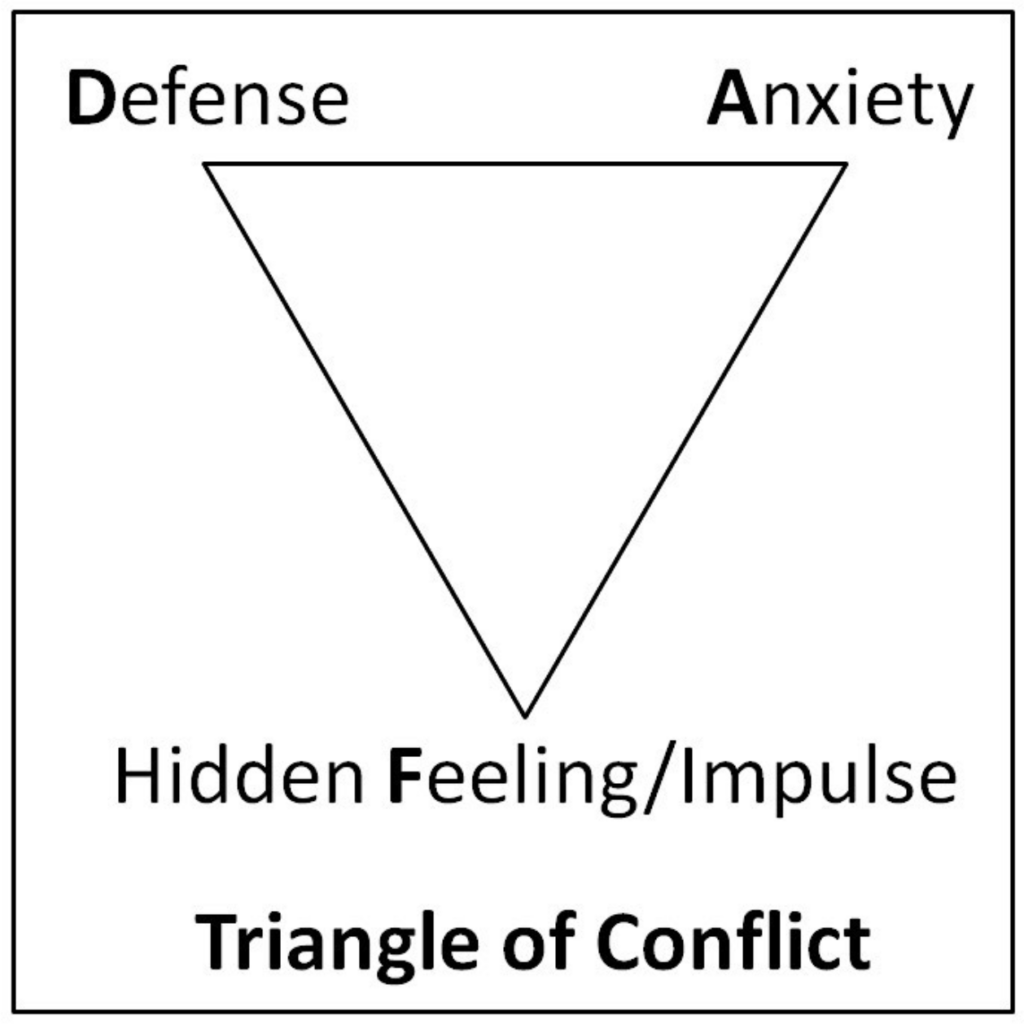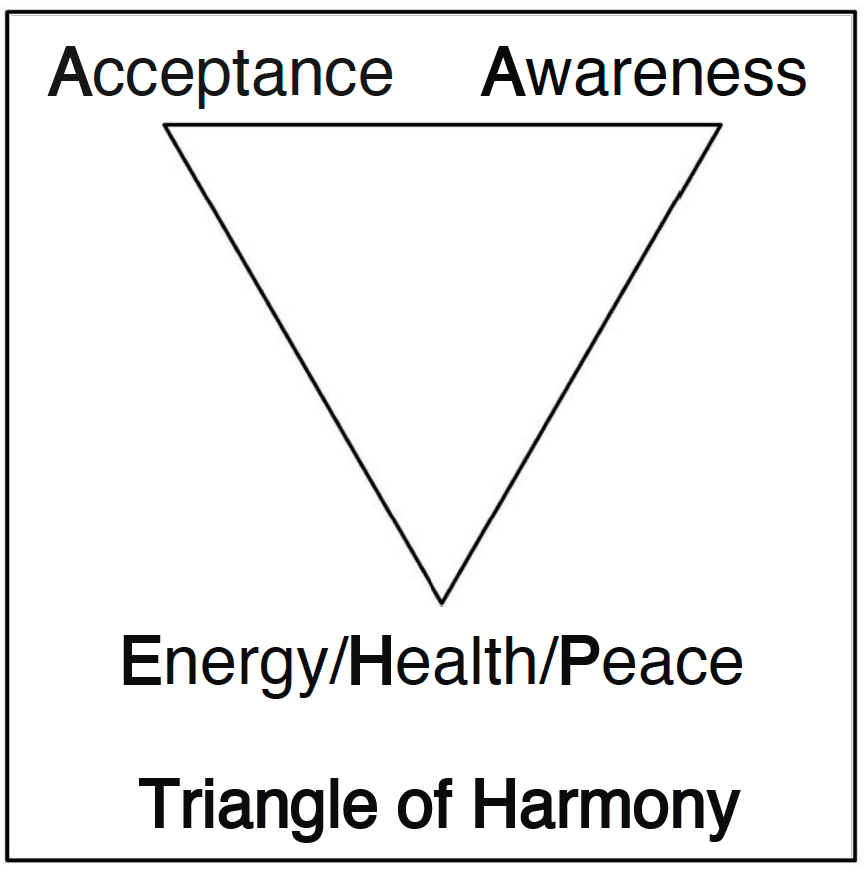Defense mechanisms are not always problematic. They can be incredibly helpful, especially in the short run. If you’re at work, for example, and you receive a distressing message from a family member, it’s probably best that you don’t feel and release your emotions then and there, as that could cause unwanted problems at work. In this scenario, using a defense mechanism, like compartmentalization or repression, would be a good choice to hold back the feelings for the time being. However, defense mechanisms are almost always problematic in the long run. If you don’t eventually face those feelings you suppressed at work, they will remain stuck in your subconscious mind, create pressure on your psyche, and find a way out, sometimes when you least expect it, which may not be ideal. So, the best approach is to employ defenses when necessary but disarm defenses when possible. That way you are able to function in daily life but it won’t result in mental, emotional, or physical problems down the road due to the accretion of years of ensnared subconscious energy.
When it comes to working with defense mechanisms, the key is awareness – in five gradual stages. First, you need awareness of the concept itself, of which specific defenses you use, and of how each one tends to show up in your life. Second, you should be able to discern which situations are appropriate for using defenses and which ones aren’t. Third, it’s critical that you become aware of your defenses as they are happening, so that you can decide whether to keep them in place or disarm them. Fourth, you’ll want to have the skills to disarm them or refrain from using them. Fifth, you’ll need a solid psychological foundation for tolerating and integrating the underlying subconscious information-energy when it rises to the surface for release. Each successive step requires an increased level of awareness, which can be cultivated steadily over time through repeated practice.
If you’ve begun to notice defenses sabotaging your life – externally (at work, at home, in relationships) and/or internally (mentally, emotionally, physically) – and you want to find resolution, then commit to becoming more aware of your inner psychological workings. As Thich Nhat Hanh declared, “the way out is in.” If you choose to take this route, please be careful. Working with the subconscious is serious business and should not be approached casually. Ideally, you can also find a professional or guide to help you. Below, I’ve provided a moment-to-moment breakdown and side-by-side comparison of the problem and the solution.
The Problem:
A situation occurs that creates an uncomfortable thought/emotion/sensation. The ego is alerted to the feeling-stimulus and quickly judges it as a discomfort, causing anxiety. Anxiety compels the ego to deploy one or more defense mechanism(s), which pushes the uncomfortable feeling out of the consciousness and into the subconscious. The uncomfortable feeling goes away and homeostasis (i.e. relative stability and harmony) is restored. This happens without awareness almost instantaneously. Over time, the subconscious (i.e. Eckhart Tolle’s “pain body”) becomes agitated and pushes to release its stored content (i.e. hidden feelings). This causes more anxiety, suffering, mental health problems, relational issues, and physical dis-ease.

Diagram created by David Malan
The Solution:
A situation occurs that creates an uncomfortable thought/emotion/sensation. Bring conscious awareness to the discomfort and set an intention to release it. Identify and deactivate any defense mechanism(s) blocking the flow of information-energy through your system. Recognize the underlying feeling and its location in your body. Witness the story (i.e. narrative) around the experience and let it go; stop identifying with it. Relax your body particularly where there is tension, slow your breathing, accept the feeling, tolerate any pain, and let it move through you like a passing wave. You will feel lighter and gain more energy and understanding. Over time, underlying health issues may resolve, and lasting inner peace will be the result.

Diagram created by Eli Recht
Why Does All This Matter?
If you’ve gotten to this point, then you now understand conceptually what defense mechanisms are, why they exist, which ones show up in your life, and how to resolve them if they are causing problems. But why should you care? Defenses are responsible for the vast majority of issues we face in today’s world.
On a global level, they are responsible for large-scale conflicts and wars. This assertion may seem like a stretch at first, but when one examines geopolitics closely, one can easily appreciate the similarities between nations and people, that nations act just like people. After all, it is defensive humans who are running countries. Sometimes I reflect on how similar international relations can be to couples therapy.
On a social level, defenses are responsible for domestic problems, civil wars, disagreements, political strife, relationship conflicts, the high divorce rate, and families being torn apart. Relationship expert John Gottman named “defensiveness” as one of the four most damaging qualities to exist in any meaningful relationship, along with “criticism, contempt, and stonewalling,” all of which I would consider to be forms of defensiveness as well.
On an individual level, defenses are responsible for a large swath of mental illnesses, emotional disturbances, anxiety, and suffering. Defense mechanisms are the weapons of the ego, and the ego corrupts everything it touches by its very nature of being an illusion. Therefore, all the suffering and turmoil and conflict in the world today can be traced back to ego, and by extension its defensive strategies. If we want peace inside and out, then our first order of business is to dissolve our own darkness in the light of our awareness. This is why it matters.
Defense Mechanisms Stand in the Way of Self-realization
Finally, if you’ve dedicated yourself to the worthwhile pursuit of Self-realization, then this work is equally relevant. Again, psychological defense mechanisms are the instruments the ego uses to maintain dominance over the awareness, which is what you really are. Neutralize the defenses and you render the ego defenseless. The defensive strategies are literally and figuratively psychological walls that the ego constructs around the spiritual heart, trapping one’s feelings within (see the image I chose for this blog for a great representation of this). Defusing the defenses frees the heart, freeing the heart frees the feelings, and freeing the feelings lightens the psyche’s load. But it doesn’t stop there. The newly released energy-information doesn’t just disappear. It flows upward, feeding and infusing the consciousness with energy and insight, pushing it to higher and more expanded levels. Then, it’s just a matter of time before the ego collapses under the ever-increasing power of your awareness-presence, making way for your true nature to be revealed and established in its full radiance.
∞
Resources for Further Reading
- Psychoanalytic Diagnosis: Understanding Personality Structure in the Clinical Process by Nancy McWilliams
- Living Like You Mean It: Use the Wisdom and Power of Your Emotions to Get the Life You Really Want by Ronald J. Frederick, Ph.D.
- The Lies We Tell Ourselves: How to Face the Truth, Accept Yourself, and Create a Better Life by Jon Frederickson, MSW
- Bringing Your Shadow Out of the Dark: Breaking Free from the Hidden Forces That Drive You by Robert Augustus Masters, Ph.D.
- Spiritual Bypassing: When Spirituality Disconnects Us from What Really Matters by Robert Augustus Masters, Ph.D.
- The Power of Now: A Guide to Spiritual Enlightenment by Eckhart Tolle
- The Untethered Soul: The Journey Beyond Yourself by Michael A. Singer